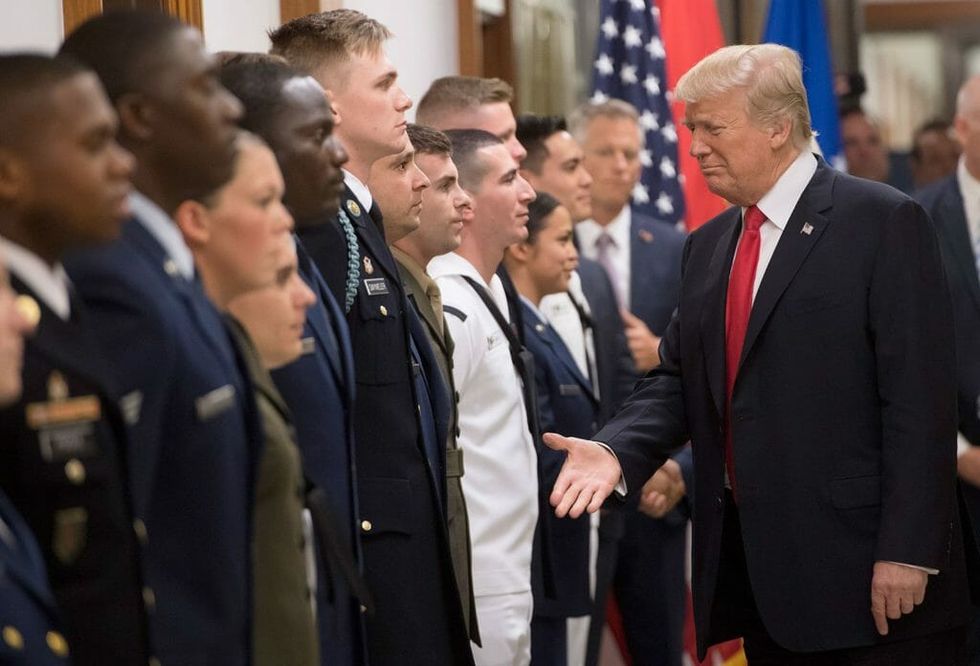President Donald Trump announced he will ban transgender people from serving in the military in any capacity, an abrupt reversal of an Obama administration decision which would have allowed them to serve openly.
Trump's decision comes a month after James Mattis, his Secretary of Defense, announced he would delay implementation of the plan to allow transgender troops by six months. Mattis made the decision on the eve of a deadline set a year ago by then-Defense Secretary Ashton Carter. The Joint Chiefs of Staff had requested a six-month reprieve, saying they needed to conduct a review of how allowing transgender recruits to serve would affect the military’s effectiveness.
“Since becoming the Secretary of Defense, I have emphasized that the Department of Defense must measure each policy decision against one critical standard: will the decision affect the readiness and lethality of the force?” Mattis said at the time. “Put another way, how will the decision affect the ability of America’s military to defend the nation? It is against this standard that I provide the following guidance on the way forward in accessing transgender individuals into the military Services.”
Former Defense Secretary Ashton Carter's decision––a historic shift in gender policy––would have required all services to allow transgender individuals to enlist starting this year. In October, the Department of Defense distributed a commander's training handbook and rolled out medical protocol and guidance for changing a service member’s gender in the Defense Eligibility Enrollment System per Carter's guidelines.
“This is the right thing to do for our people and for the force,” Carter said last year, explaining his landmark decision. “We’re talking about talented Americans who are serving with distinction or who want the opportunity to serve. We can’t allow barriers unrelated to a person’s qualifications prevent us from recruiting and retaining those who can best accomplish the mission.”
Carter cited RAND Corporation estimates: The RAND study suggests the number of transgender individuals serving in the active duty component of the military is between 1,320 and 6,630 of a total 1.3 million troops. The study notes there are roughly 65 service members who seek a gender transition every year. RAND also found that the number of transgender service members “would likely be a small fraction of the total force and have minimal impact on readiness and health care costs.”
 SECONDNEXUS
SECONDNEXUS percolately
percolately georgetakei
georgetakei comicsands
comicsands George's Reads
George's Reads








